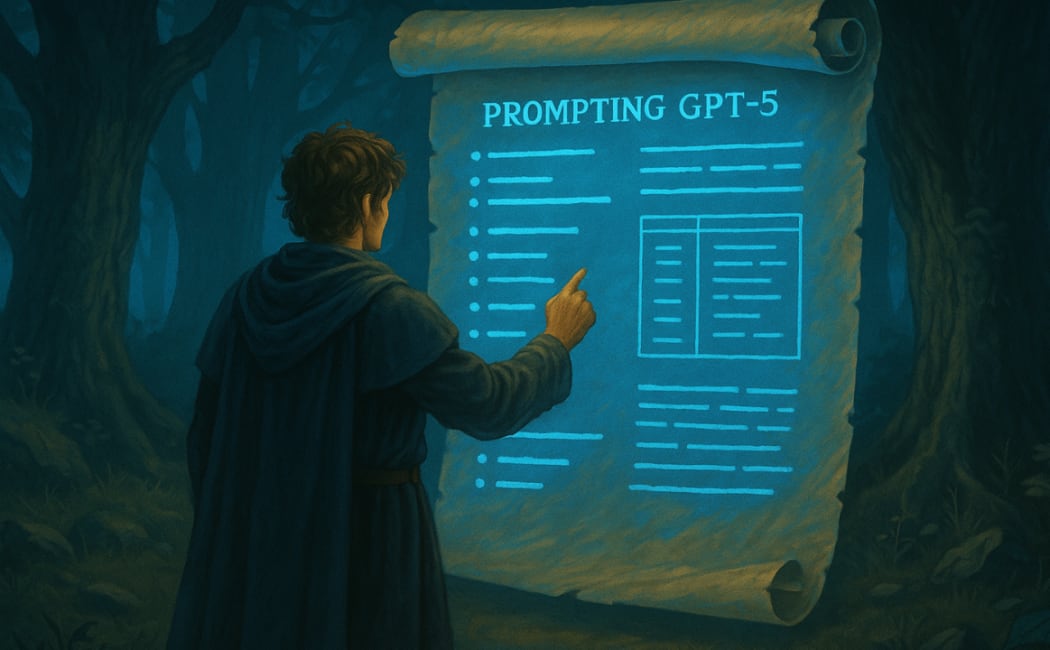The Ultimate GPT-5 Prompting Guide: Maximize AI Output

The Ultimate GPT-5 Prompting Guide: Maximize AI Output
Using GPT-5 effectively requires more than just typing a question. The quality of your prompts directly influences the responses you receive, whether you’re generating content, analyzing data, or building applications. This guide provides comprehensive tips, techniques, and best practices to help you craft prompts that deliver precise, accurate, and creative AI outputs.
Understanding GPT-5 and Prompting
GPT-5 is a powerful language model capable of understanding and generating human-like text. Unlike earlier versions, GPT-5 is optimized for complex reasoning, context retention, and nuanced responses. A well-structured prompt allows you to guide the AI effectively, ensuring that the generated content aligns with your goals.
Core Principles of Effective Prompting
1. Clarity and Specificity
Ambiguous prompts often lead to vague or irrelevant answers. Be clear about what you want. For example, instead of asking "Tell me about marketing", specify "Explain five digital marketing strategies suitable for small businesses in 2025." The more precise your prompt, the more accurate GPT-5’s response will be.
2. Context Matters
Providing context helps GPT-5 understand your requirements better. Include necessary background information or examples. For instance, if you want a formal business email, mention the audience, tone, and purpose. Context ensures the output is aligned with your expectations.
3. Step-by-Step Instructions
Breaking down tasks into steps improves output quality. Instead of asking GPT-5 to "Write a blog post", guide it with steps: introduction, key points, examples, and conclusion. This structured approach yields well-organized responses and reduces the need for extensive edits.
Advanced Prompting Techniques
1. Role-Playing Prompts
Assigning GPT-5 a role can enhance accuracy and style. For example: "You are a professional financial advisor. Explain the benefits of diversified investment portfolios to beginners." This encourages the AI to adopt the perspective and tone of the role you assign.
2. Few-Shot Learning
Provide examples in your prompt to guide GPT-5. For instance, showing two or three examples of a desired email format before asking it to generate a new one helps the AI mimic your style more effectively.
3. Chain-of-Thought Prompts
Ask GPT-5 to think step by step. Example: "Explain the process of starting an e-commerce business step by step, including planning, platform setup, and marketing." This technique is especially useful for problem-solving or instructional content.
4. Controlled Creativity
You can instruct GPT-5 to limit or expand creativity. Phrases like "Use a formal tone with no jokes" or "Generate a creative story with fantasy elements" help control the style, tone, and imaginative aspects of the response.
Common Prompting Mistakes to Avoid
- Overly vague prompts: Leads to generic responses that need extensive edits.
- Excessive complexity: Avoid combining too many unrelated tasks in one prompt.
- Neglecting context: Missing details can result in outputs that don’t match your goals.
- Ignoring format instructions: Always specify the format, whether bullet points, paragraphs, tables, or code snippets.
Optimizing Prompts for SEO and Content Creation
When using GPT-5 for content creation, SEO optimization is crucial. Include relevant keywords in your prompt, ask for meta descriptions, headers, and subheaders. For instance, prompt: "Write a 1,000-word blog post on AI tools for digital marketing, including SEO-friendly headings and meta descriptions." This ensures the content is ready for publishing with minimal adjustments.
Prompt Testing and Iteration
Effective GPT-5 prompting often requires trial and error. Test multiple prompts to see which yields the best output. Refine by adjusting wording, adding examples, or specifying tone. Iteration improves response quality and reduces unnecessary back-and-forth editing.
Conclusion
Mastering GPT-5 prompting is both an art and a science. Clear, contextual, and structured prompts combined with advanced techniques like role-playing and chain-of-thought reasoning unlock the full potential of this AI. Whether for content creation, business automation, or learning, following this guide will help you generate precise, high-quality outputs and save time. Practice regularly, experiment with different styles, and refine your approach to become a GPT-5 prompting expert.
